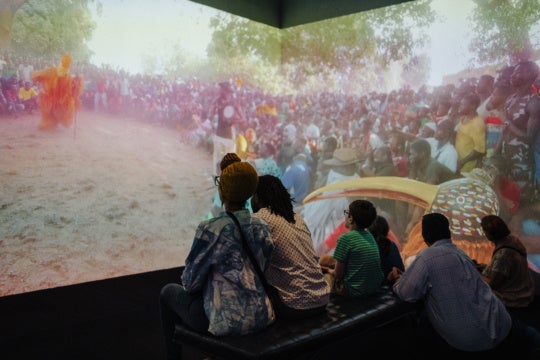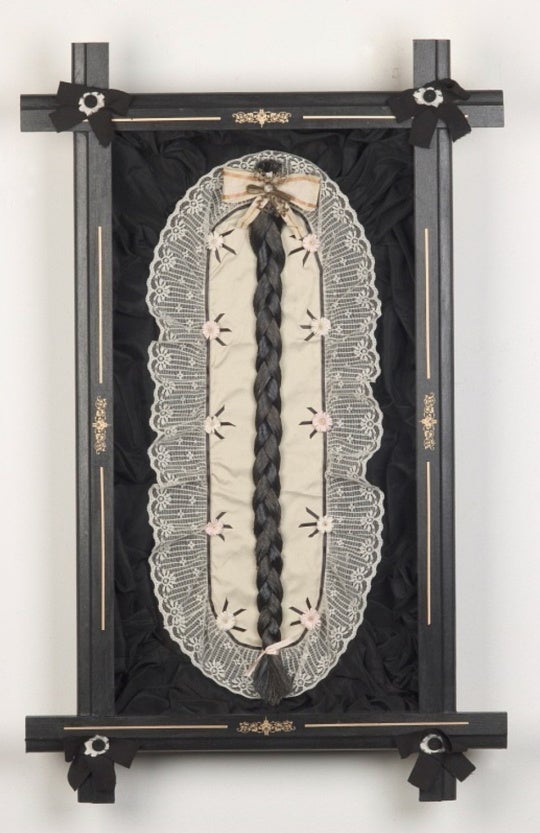
Currently on view at Marcia Wood Gallery in Midtown is a delightful ceramics show that brings together ceramicists from around the world, representing a range of techniques in this under-appreciated medium. Virginia Scotchie, an artist and professor at the University of South Carolina, contributed the most pieces to the show. Several distinct bodies of work show off the technical prowess and intense creativity she brings to ceramic arts. Donald Locke, a Guyanese artist who spent the last two decades of his life producing innovative work in Atlanta, has several fun examples in this show. Four other artists contributed unique, masterful works that make clay-based sculpture accessible for contemporary audiences.
When you step into Marcia Wood Gallery, the first works you notice are Scotchie’s Pollinators which feature cylindrical bodies with organlike elements attached along the base. Both the cylinder and the extremities are hand-thrown, and then combined before glazing and firing as a single piece. The works carry a vaguely sexual feel — like vessels to spread and absorb seed. Look close at the seafoam-colored glaze on Pollination I (Funnel) and you might notice a small drip hanging off one of the funnels. This is not a mistake; rather, it is a much-desired mark of a master. Scotchie adds just the right amount of extra glaze so gravity will pull it down in the kiln during firing. Too much extra glaze or too cold a kiln, and the glaze will fall off and make a mess. Too little glaze or too hot a kiln and the drip will break off. Small details like this reveal Scotchie’s mastery of ceramics.
Several Scotchie pieces look like excavated artifacts from long lost civilizations. One suite of works, Roman Artifacts, features a bronze-based glaze and shapes evocative of ancient tools and vessels. For the Object Maker Series, Scotchie once again combined thrown and constructed pieces to create forms with bulbous attachments, strange spouts, and unhelpful handles, glazed with high-key colors like ultramarine and chartreuse that are suggestive of alien civilizations and vintage sci-fi movies.

Jeff Kaller’s single contribution, Untitled Cone Form, is the most beautifully constructed piece in the show. Delicate strips of clay are hand-formed into a swirling funnel that imitates undersea creatures, or perhaps a churning deep-water propeller. Negative space is used to great effect in this work. The space in between the strips of clay allow light to shine through, casting beautiful shadows on the pedestal the piece sits on. The strips of clay themselves have holes inside them, imitating the natural negative space of coral and other sea shapes.
Works by Donald Locke show how ceramics has transcended associations with craft to become a fine art medium, reflecting creative vision rather than serving as a tchotchke or functional vessel. Locke used clay to create forms upon which he would paint, draw, and attach other materials to. Timehri Afro is topped with bushy fake hair, and others examples have sticks and beads sprouting out of them. The chunky clay bases feature gestural brushwork like a Picasso painting or Romare Bearden print. Locke’s pieces are meant to be viewed in the round, each with its own bright personality.

Atlanta’s Katie Ridley Murphy creates porcelain sticks using a sewing needle to meticulously carve wood grain. The long-numbered titles, such as “Pile” 33.747169, -84.622997, are the geographic coordinates where she finds the original sticks she mimics, and the original is shown along with the remade porcelain piece. Dawn Holder uses chunks of concrete, porcelain, and asphalt to make miniature coral reefs. Plant matter such as weeds, dead flowers, fallen branches, hedge clippings, seed pods, and clusters of dried berries are dipped in porcelain slip (liquid clay), and then fired to burn out the organic material, leaving behind a delicate shell, which is then glazed and fired again. The plant forms are often not recognizable because they are abstracted by the process and composition—covered in layers of slip, turned in different directions, and glazed with unusual colors. Yuichiro Komatsu’s shelf-top installation is notable for its gentle gradient of pastels—from pink to blue—in thick-walled, coarsely textured vessels. William DePauw’s hefty ceramics use shapes like acorns and uncut penises to create tabletop conversation pieces.

This is an exhibition about medium and technique, about how different artists can use the same medium in radically different ways. From Donald Locke’s paintings-in-the-round to Dawn Holder’s exploration of organic negative space, there’s plenty to learn and love in this show.
“Ceramics” is on view at Marcia Wood Midtown through March 19.
Matthew Terrell writes, photographs, and creates videos in the fine city of Atlanta. His work can be found regularly on the Huffington Post, where he covers such subjects as the queer history of the South, drag culture, and gay men’s health issues. He was a participant in Cycle 2 of BURNAWAY’s Art Writers Mentorship Program.




